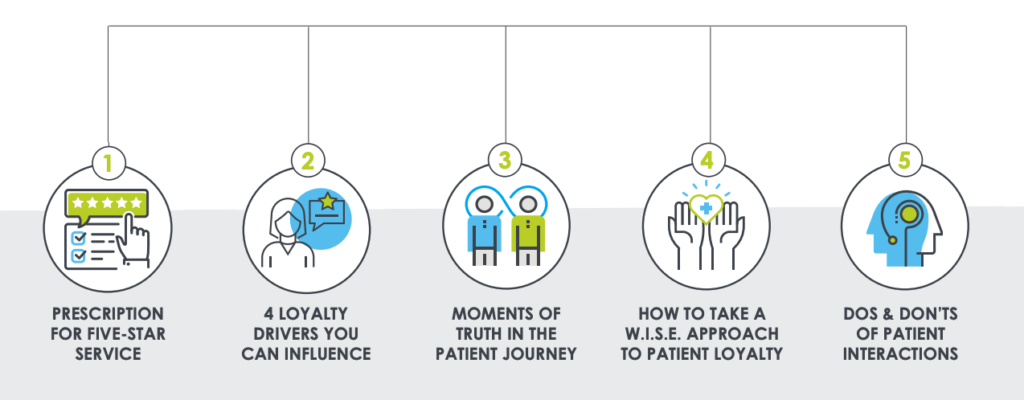This guide includes five key resources to help healthcare leaders and providers drive high patient satisfaction and gain ongoing patient loyalty.

Scalable approaches that prioritize acute patient care while achieving strategic goals.
Streamlined management and virtual care solutions to maximize efficiency.
Intensivist staffing and management, leveraging technology for quality care.
Solutions to align and integrate processes and understanding across departments.
Leverage technology to expand coverage & support both in and outside of the hospital.
Engaging with patients for proactive planning and preventative health.
 Featured
Featured

A 2017 survey1 of 192,936 U.S. households found that 40.37% of consumers are not loyal to a hospital or health system for care. As a result of COVID-19, community members have been hesitant to seek care at all, leading to even less commitment or loyalty. As a result, hospitals need to first build back trust, then work to sustain loyalty–and these four drivers are significantly important focus areas.
Before COVID-19, you may have been a top choice in your community based on how new or “fancy” your facility is. Now, you’re being evaluated on how proactive and clear you are about the safety and cleanliness of your space. It’s no longer something patients will assume or take for granted–so make sure to overemphasize what you are doing to ensure the physical and psychological safety of your community.
More than ever, people are showing they care about the clinical providers and hospital staff. The way you supported your workforce during the pandemic speaks volumes to the community–and it doesn’t stop there. Consumers will keep watching to ensure you are prioritizing the wellbeing and safety of your workers.
The telehealth horse is out of the barn–and it isn’t going back. If you aren’t investing in the accessible, affordable virtual care capabilities that your particular community needs, you will struggle to gain their ongoing respect, trust, and loyalty. Additionally, offering virtual care hours to your providers can help preserve their engagement and health, too.
As partisan ideals continue to creep into healthcare, your consumers will struggle to know who to listen to: the CDC? The president? The governor? The mayor? Amid this chaos, present your organization as a neutral and reliable source of information that clearly cares for the health of your community more than any political position. Seek to be a transparent, trustworthy partner to your community.
Though it’s always important to focus on patient experience, there are certain moments in patients’ care journeys where they will be particularly attuned to the service they are receiving. In these moments, it is imperative to go beyond the basics to ensure not just satisfaction, but true loyalty.
Moments of Truth |
Patient Satisfaction |
Patient Loyalty |
| ED Visit | Receives needed treatment from competent professionals | Treats the patient’s immediate need but then a physician calls the next day to follow up personally |
| Admits/Transfers | Performs admission or transfer smoothly and quickly | Performs admission or transfer smoothly and quickly—and transition of care to inpatient provider team is seamless |
| Discharge | Patient given clear instructions at the time of discharge and has materials to reinforce the instructions once they return home | Handles the discharge through a care coordination center that acts as a navigator who continues to communicate and support their needs after they return home |
The key to creating consistent patient experiences and ongoing loyalty is exceeding patient expectations on four fronts.
Manage expectations to improve perceptions. Give realistic expectations and overestimate rather than underestimate. Do not make statements such as “The doctor will be with you in one minute” or “I will go check and be back in five minutes to let you know.” Set yourself up for promises you can keep, not those you can’t.
Share as much information as possible. Patients’ sense of uncertainty and psychological distress increases when they feel uninformed. Always promptly update patients on: delays, types & reasons for tests, diagnosis, reason for admission, discharge, current status
Recognize that symptoms are subjective. Patients all experience pain and other symptoms in their own ways, and expect to be understood and treated accordingly. Poor symptom relief can actually be perceived by the patient as lack of caring.
Understand that faster is not necessarily better. Take time with each patient, be courteous, and express genuine concern. Patient satisfaction and ultimate loyalty is more affected by the expressive (caring) aspect of treatment than the technical (curing).
